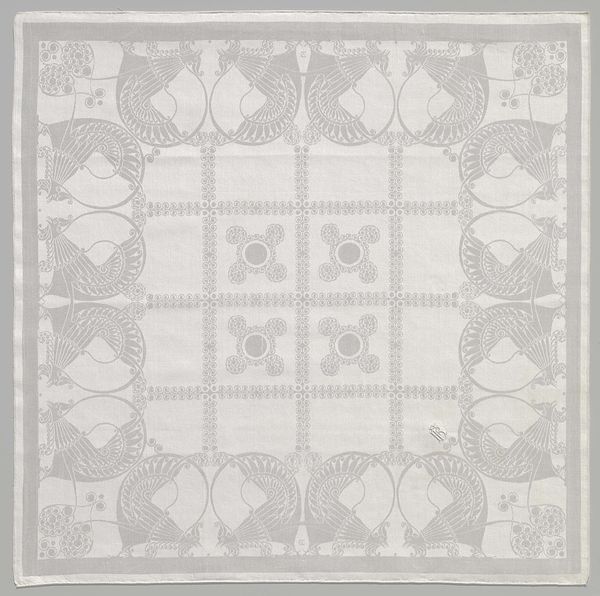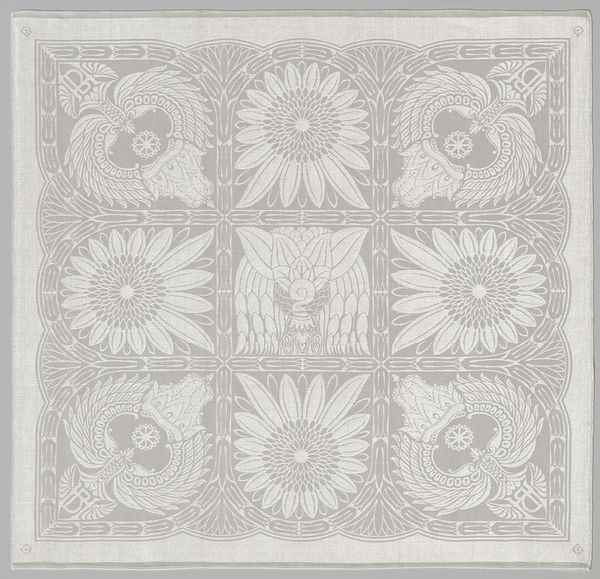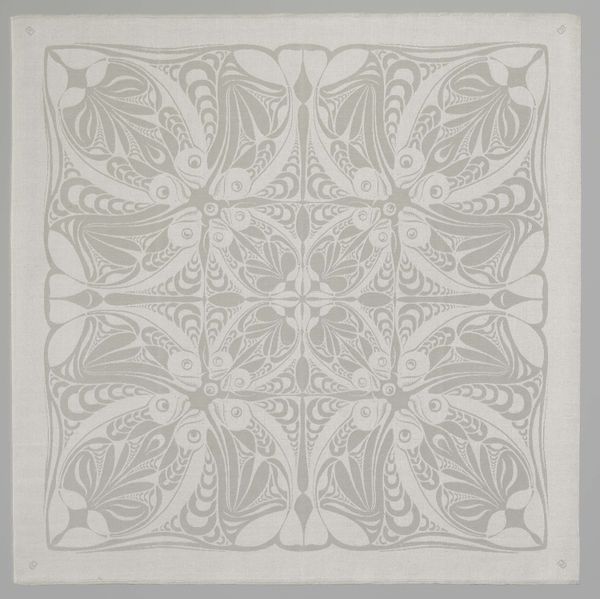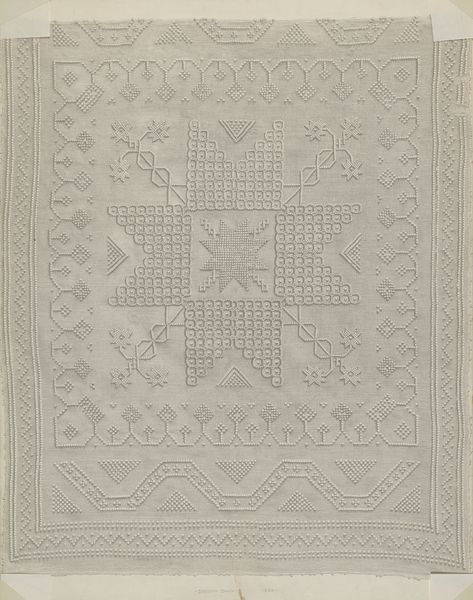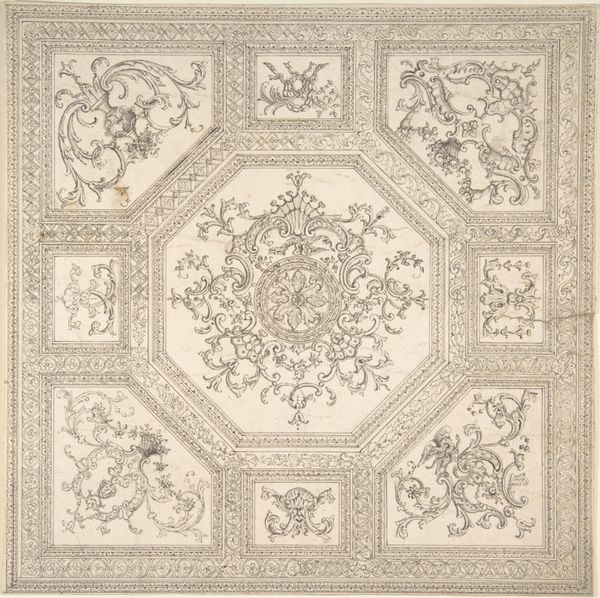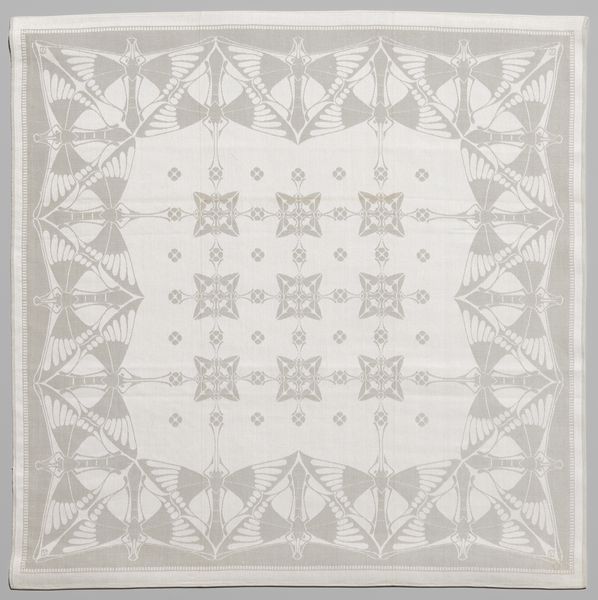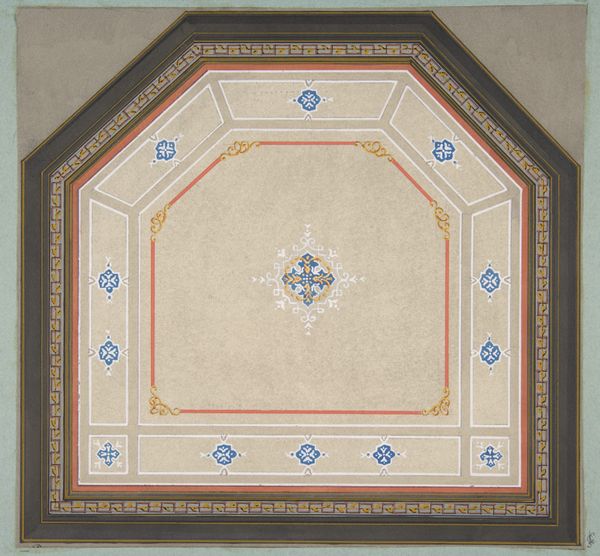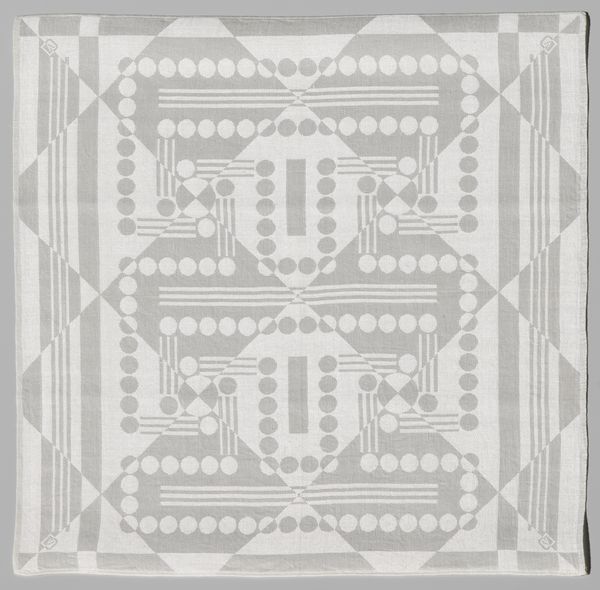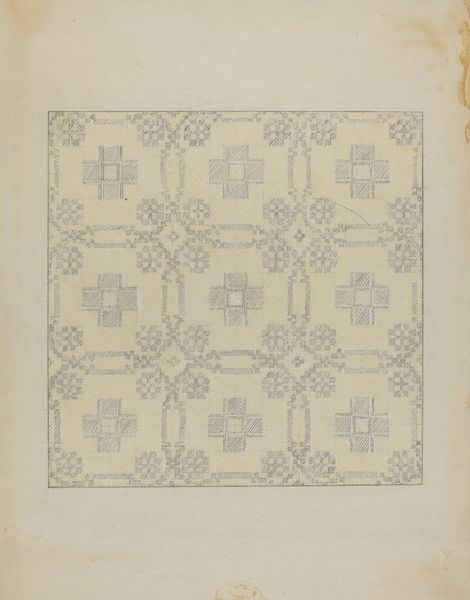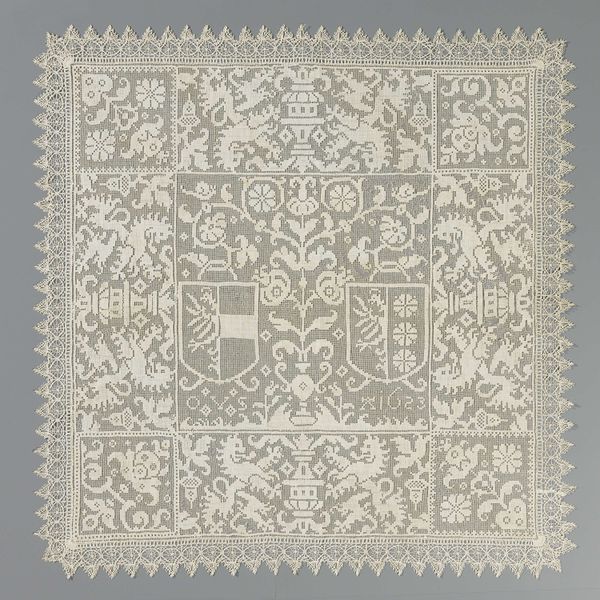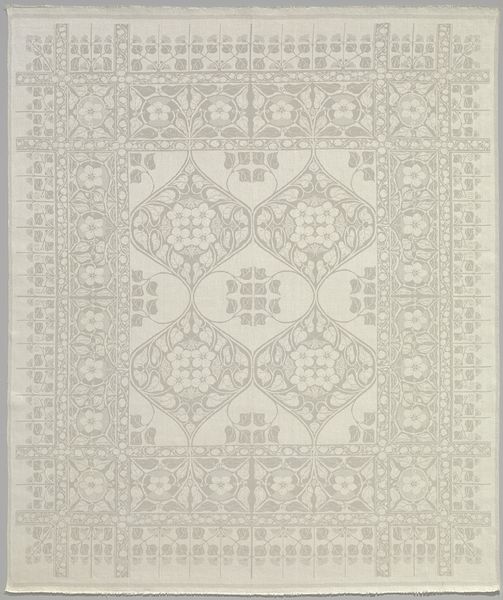
weaving, textile
#
natural stone pattern
#
art-nouveau
#
weaving
#
textile
#
repetitive shape and pattern
#
organic pattern
#
geometric
#
repetition of pattern
#
vertical pattern
#
pattern repetition
#
layered pattern
#
funky pattern
#
combined pattern
#
repetitive pattern
Dimensions: height 70 cm, width 71.6 cm
Copyright: Rijks Museum: Open Domain
Curator: Here we have a linen damask napkin initialed "StH," created around 1920 by Chris Lebeau. It’s a beautiful example of textile art. Curator: It's visually so serene. There's almost a hypnotic quality to the repeating patterns and subtle color. Curator: Yes, the subtle gradations in the damask weave are key. The production of damask involves a specialized loom and skilled labor. Consider the social status implied in owning such fine household linens at this time. Curator: Absolutely. A piece like this serves not just a functional purpose, but also speaks volumes about class, domesticity, and gender roles of the period. Who was the StH that these belonged to, what did the production workforce look like? Curator: Lebeau's engagement with Art Nouveau's ideals is clear here, in this combination of organic motifs with geometric shapes. You see the attempt to elevate craft to the level of fine art. Curator: That Art Nouveau aesthetic reflects a broader cultural yearning for harmony during a time of significant social upheaval and anxieties surrounding industrialization. The handmade was perceived as morally better, somehow. But could all partake of this aesthetic? Who could afford to make these kinds of political choices, buying into an anti-industrialism that at its core, sustained existing socioeconomic divides? Curator: Precisely. There’s a fascinating tension in the use of linen. The production of such a textile depends upon intensive agricultural processes and global trade networks of raw materials and finished products. The napkin isn’t “natural” per se. Curator: Which brings up how such objects like this, intended for personal use within private homes, can also have a powerful public dimension once they are put on display. It opens the opportunity to reflect on values associated with home life such as hospitality and care – which can sometimes exist as sites of domestic oppression. Curator: Ultimately, this napkin is more than just a utilitarian object, it exemplifies a critical juncture in the history of design. Curator: I agree, viewing it from this angle really complicates our understanding of design movements in this period, its material implications but also its cultural messaging too.
Comments
No comments
Be the first to comment and join the conversation on the ultimate creative platform.
